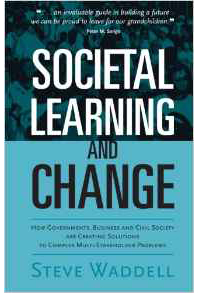Complexity
Complexity as used by NetworkingAction has a very specific meaning. A complex challenge contrasts with three other types of challenges, each requiring distinct tools, methods and strategies.
Simple challenges are ones that well-defined knowledge can address with engagement of relatively few players. They lend themselves highly routinized responses that can be managed with a hierarchical system, such as one for reporting potholes to an agency (eg: municipal government) that will send out someone to fill them. Planning usually consists of ensuring availability of skills and resources within relatively predictable, narrowly and precisely defined parameters.
Complicated challenges are ones where there is a desired outcome defined by physical, observable outputs, but which require the efforts of a large number of organizations, each of which has only a small piece of the “solution”. For example, putting a person on the moon required working through many definable engineering challenges and the development of a network of many organizations. Planning is much less precise than for simple challenges since the work involves development of new relationships (coordination) and new technologies (technological innovation) where there are significant unknowns to address.
Chaotic challenges are ones where no patterns can be discerned and therefore action is driven by instinct and planning is impossible. When a natural disaster strikes, the immediate impact is bedlam; the only systemic response to such situations is to build buffers, redundancy and capacity to deal with a broad range of
Complex challenges are ones where there are many diverse interacting relationships. Direction is not predictable in terms of specifics, although patterns and past behavior can suggest future changes. Patterns can suddenly change dramatically (transform) in response to relatively minor, but hard to identify alterations in conditions. For example, when addressing poverty, the general direction can be defined but its meaning and appropriate actions to move in that direction are in continual evolution without an “endpoint” such as with complicated challenges. Patterns quickly can change with political, technological and other changes. The focus for action is upon identifying opportunities, and guiding, supporting, amplifying and emerging in desired directions. The unpredictable nature of complex challenges makes inappropriate traditional planning approaches and associated frameworks such as measurement ones.
For more:
Waddell, S., McLachlan, M., Meszoely, G., & Waddock, S. (August 2015). Large Scale Change Action Research. In H. Bradbury (Ed.), Action Research Handbook (pp. Chapter 55): Sage.
Snowden, D. J., & Boone, M. E. (2007). A Leader’s Framework for Decision Making. Harvard Business Review, 85(11), 68-76.


